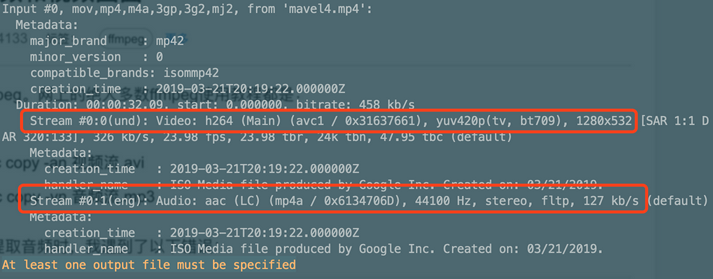

To install ffmpeg on CentOS, AlmaLinux, and Red Hat: $ sudo dnf install $(rpm -E %fedora).noarch.rpm $(rpm -E %fedora).noarch.rpm To install ffmpeg on Ubuntu, Debian, and Linux Mint: Use the appropriate command below to install it on your own computer. The software is available on all major Linux distros and can be easily installed using your system’s package manager. $ – requires given linux commands to be executed as a regular non-privileged userīefore we dive into the examples below on how to extract audio from a video file, you will need to install ffmpeg on your system. # – requires given linux commands to be executed with root privileges either directly as a root user or by use of sudo command Privileged access to your Linux system as root or via the sudo command. Requirements, Conventions or Software Version Used How to extract audio from video on Linux Software Requirements and Linux Command Line Conventions Category How to extract audio from a video on Linux.How to install ffmpeg on all major Linux distros.The audio can be extracted into a variety of formats like mp3 or ogg, and the video types supported range from mp4, mkv, avi, and others. This can be done from the command line after installing the ffmpeg software package, if you do not already have it.

See Text on video using ffmpeg for many more examples.The purpose of this tutorial is to extract the audio contents from a video file on a Linux system. You can add text with the drawtext filter: ffmpeg -f lavfi -i color=c=blue:s=1280x720 -i input.mp3 -vf "drawtext=fontfile=/path/to/font.ttf:text='Your -shortest -fflags +shortest output.mp4 If you want a plain color background use the color filter: ffmpeg -f lavfi -i color=c=blue:s=1280x720 -i input.mp3 -shortest -fflags +shortest output.mp4 See Resizing videos with ffmpeg to fit into specific size for more info and examples. This command uses the scale + pad filters to make image fit into 1920x1080, setsar filter to set a normal Sample Aspect Ratio, then the format filter sets the chroma subsampling to YUV 4:2:0 for playback compatibility. Using an image ffmpeg -loop 1 -i input.jpg -i input.mp3 -vf "scale=1920:1080:force_original_aspect_ratio=decrease,pad=1920:1080:-1:-1:color=black,setsar=1,format=yuv420p" -shortest -fflags +shortest output.mp4


 0 kommentar(er)
0 kommentar(er)
